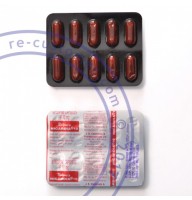Nifedipine, like any medication, can cause side effects, although not everyone experiences them. Common side effects include flushing, headache, dizziness, and swelling in the ankles or feet. These side effects are generally mild and may improve as the body adjusts to the medication.
Less common but more serious side effects can include low blood pressure, irregular heartbeat, shortness of breath, and allergic reactions such as rash or itching. In rare cases, nifedipine may cause more severe adverse effects like liver problems or a severe drop in blood pressure leading to fainting.
It's important for patients to monitor for any unusual symptoms while taking nifedipine and to report any concerns to their healthcare provider promptly. Additionally, because nifedipine can interact with other medications, it's crucial to inform healthcare providers about all other medications being taken, including over-the-counter drugs and supplements.
As with any medication, the benefits of nifedipine should be weighed against potential risks, and patients should follow their healthcare provider's instructions carefully. Adjustments in dosage or alternative medications may be considered if side effects are problematic or severe.
Patients should also avoid sudden discontinuation of nifedipine without consulting their healthcare provider, as this can lead to rebound effects or worsening of symptoms. By maintaining open communication with healthcare providers and adhering to prescribed guidelines, patients can manage potential side effects and optimize the effectiveness of their treatment with nifedipine.

